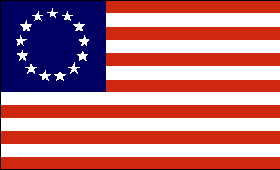Colonial Wars |
American Wars |
Link To This Page — Contact Us —
The Battle of Mobley's Meeting House
10 June 1780 near Winnsboro, Fairfied District, South Carolina
 |
|||||||||||||||||||||
|
The Battle of Mobley’s Meeting House is an engagement that occurred during the American Revolutionary War in the Mobley Settlement, Fairfield County, South Carolina during the Southern Campaign of Lord Cornwallis. On a date between 7 and 11 June, most likely 10 June 1780, a small body of Whig militia numbering between 100 and 200 in total was formed from the commands of Colonel William Bratton, Colonel (Captain) Edward Lacey, Captain (Colonel) John McClure, Colonel Samuel Watson, Colonel Cooper, and Colonel William Hill, with Majors Richard Winn and “Paddy” McGriff as the Field Majors and Adjutant James ‘Jemmy’ Johns(t)on. This group was comprised in large part of the Whig forces that had a few days earlier routed and scattered a Tory gathering at Beckhamville, South Carolina under the command of the Tory Colonel (or Captain) Houseman. Colonel William Bratton was elected overall field commander for the engagement, and this group attacked a formation of Tories who were plundering the greater Fairfield District neighborhood in the aftermath of the fall of Charleston under the active encouragement of Lord Cornwallis at Camden and British Colonel Turnbull at Rocky Mount.
The Tories had formed at a well-known rendezvous location called Mobley’s Meeting House in the Mobley Settlement, located on a high embankment on a branch of the Little River in Fairfield District. They were under the general command of Tory Colonel Robert Coleman of Fairfield District, Tory Colonel Joseph Fleuquinyan and Tory Captain William Nichols. This group had plundered many of the possessions of Whigs in the area, in particular members of the Hampton family and had sent John and Henry Hampton prisoner to Lord Cornwallis at Camden. Thus laden down with booty and awaiting British assistance, the Tories were hit by the combined Whig force more or less by surprise and, like at Beckhamville, scattered in retreat in short order. The attack occurred at daybreak with an assault on the Church and a nearby strong/block house or fortified building. The Whig forces attacked from three sides, leaving the fourth uncovered as it was thought that the embankment was too hazardous to climb for an attack or to descend in a retreat. However, during the confusion and panic, a number of Tories attempted just that and were injured in the process. Few casualties were noted on either side other than those resulting from falls down the embankment. Much of the plunder was recovered and restored to the owners, and a significant number of prisoners were taken and sent to North Carolina. After the battle, some of the Whigs immediately left for North Carolina while others stayed on. In the immediate aftermath, Colonel Turnbull, the regional British commander at Rocky Mount, sent the New York Provincials (the Green Coats Tories) under Captain Christian Huck in reprisal. They in turn destroyed the home and parsonage of the Reverend John Simpson and attacked the remaining Whigs at the Iron Works of Colonel William Hill. After the destruction of the Iron Works, the remaining Whigs were forced to withdraw into North Carolina and assist in Sumter’s rise and their vengeance on Huck in July.
The location of the meeting house is about 6 miles west of present-day Winnsboro on the waters of the Little River. A marker has been placed nearby, on SSR 18 at a point approximately 1.5 miles west of the site. At one time, there was a road or pathway that went past the meeting house, but it is inaccessible today. At the 16 August 1786 session of the County Court for Fairfield District (County), the inhabitants on Little River petitioned for a road from Mobley’s Meeting House to Winnsboro leading by James Rogers’ house. This order was granted, and a commission of Burr Harrison, Esquire, Thomas Shannon and Thomas Addison was empowered to view the road. Surveyors (maintainers) for the road were also ordered at this session as a Mr. Butler for the leg from the meeting house to Mr. Harrison’s on Little River, and for Benjamin Harrison for the leg from Harrison’s to the Winnsboro Road. It would appear that in the two centuries hence, this road has been discontinued at least in the part near the meeting house site.
While minor in scope, this engagement and others like it represented important symbolic victories for the Whigs. Mobley’s Meeting House and the Battle of Beckhamville were the first two Whig successes against a string of defeats at Monck’s Corner, the Waxhaws, Lenud’s Ferry, and the demoralizing fall of Charleston. Other setbacks at Brandon’s Defeat and Hill’s Iron Works after the Beckhamville and Mobley’s Meeting House successes continued to press the Whigs, but rallies at Huck’s Defeat (Williamson’s Plantation) and Ramsour’s Mill continued to provide strategically small, but much needed morale and spiritual, victories to keep the Patriots going through these dark days, especially after the whippings delivered on them by the British at Camden and Fishing Creek only two months later on 16 and 18 August 1780. It wasn’t until 7 October 1780 that deliverance came, with the decisive Whig victory at King’s Mountain that was, in retrospect, the turning point of Cornwallis’ Southern Campaign.
